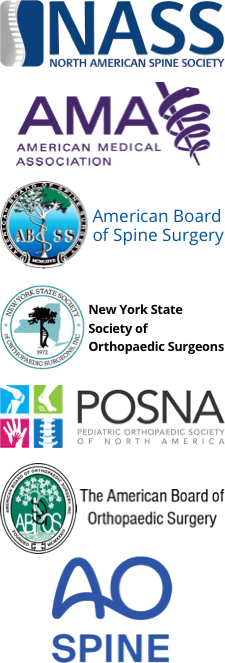Many of my patients first visit my practice with complaints of neck and arm pain, caused by a herniated disc. Although most episodes of neck pain are temporary, some patients experience chronic pain that ultimately requires surgery. Depending on the patient’s level of discomfort, there are two surgical options, cervical spinal fusion and disk replacement.
When cervical spinal fusion surgery is performed, the affected bones in the neck are “fused” together using bone graft material with a plate and cage, so they can heal into one healthy bone. Bone grafts can be taken from a patient’s pelvic bone, or cadaver and synthetic bone are also options.
Depending on the type of herniated disc and spinal stability, the spinal surgeon will determine the best method for surgery. These methods are anterior fusion, where the spine is operated on from the front, and posterior fusion, where the spine is operated on from the back.
After cervical spinal fusion surgery, surgeons sometimes recommend wearing a brace to support the fusion progress. This is more important after a multi-level fusion. Maturation of the fusion can take up to 12 weeks. It is important for patients to limit their physical activity level and allow the necessary time for the healing process.
Although cervical spinal fusion surgery is the most common option for surgery, an new alternative option is to undergo artificial disc replacement surgery. For this option, tests are performed to determine if a patient is a good candidate. It is a newer surgical procedure where a mobile mechanical device replaces the injured disc in the spine. The goal is to preserve motion at the operated segment of the spine. Pertaining to rehabilitation, the AAOS states, “Because bone healing is not required following an artificial disk implantation, the typical patient is encouraged to move. Early motion may translate into quicker rehabilitation and recovery.”
As with any surgical procedure, there are pros and cons for the patient and doctor to consider, depending on the patient’s condition. Although artificial disk replacement surgery provides patients with increased mobility in a shorter period of time, and seems like a great option, there is also the possibility of the mechanical device deteriorating over time. To that point, we always keep the patient’s particular cause of pain, as well as their lifestyle choices, in mind when recommending surgery. Treatment success is dependent on an open and honest conversation with my patients.
I will be discussing Cervical Disc Replacement on an academic panel for the American Academy of Orthopaedic Surgeons course on May 3, 2013. The course is called “Top Orthopaedic Controversies.” For more information on cervical spinal fusion and artificial disk replacement surgeries, please visit the “OrthoInfo” page on the American Academy of Orthopaedic Surgeons website; at http://orthoinfo.aaos.org/.










